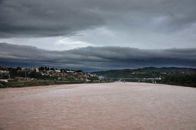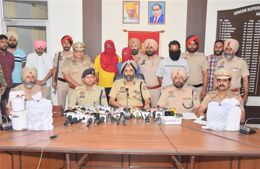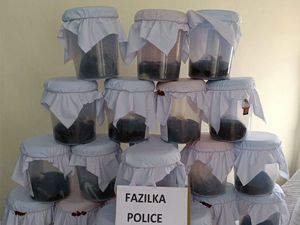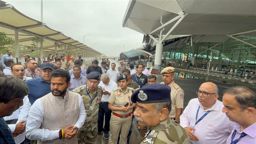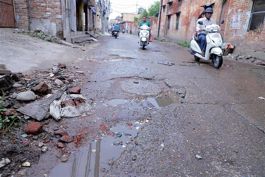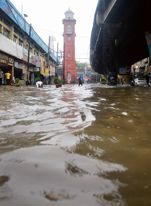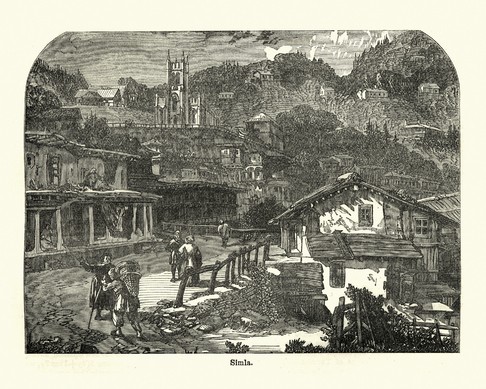
A vintage engraving of a view of Shimla in the 19th century. Istock
Raaja Bhasin
In the 1950s and 1960s, if you belonged to North India and were referred to as a ‘Simla Pink’, that did not imply you had a rare and incurable skin disease. On the contrary, the phrase carried a high level of snobbery on part of the ‘pink’ and a fair level of envy on part of the ‘non-pink’. Being a ‘Simla Pink’ meant you escaped the sweltering heat of the plains in summer and moved to the hills for several months till autumn brought the temperature down to a more comfortable level. At the top of the ‘Scale of Pink’, you had a summer house in the hills. Somewhat lower down on this uphill index, one stayed with relatives or friends or horror, lived in a hotel or as a paying guest.
Apart from the mega hill-cities like Shimla and Darjeeling, there are dozens of smaller ‘hill stations’ all across the country and almost all owe their existence to the colonising British. Over the past few decades, we have overhauled them for better or worse. The ‘hill station’ was a new urban concept to India and as far as Shimla was concerned, it was for the first time in Indian urbanisation that something so big was pushed so high up a hill. All traditional major habitations of today’s Himachal Pradesh lay along valley floors — old Kullu (Sultanpur), Kangra, Chamba, Bilaspur and somewhat later, Rampur-Bushahr.
Shimla may have been called the ‘Summer Capital’, the role it was officially bestowed in 1864, but for all practical purposes, this was the true capital of India right up to 1939 and the outbreak of the Second World War. The government moved to Shimla in late March or early April and stayed put, pink, puffed and pouting, till late October or early November. Now, we end up in a fairly strange situation. The real capital, Kolkata, is 1,200 miles away and before the arrival of the railway line, the journey between the two capitals could take several weeks. The acquisition of the core of both Shimla and of Darjeeling, took place in the 1830s. Darjeeling, which is practically parked in Kolkata’s backyard, became the retreat for tea-planters and ‘box-wallahs’, European businessmen from Bengal. It was distant Shimla that was destined to become the place from where a fifth of the human race would be ruled as the jurisdiction of the Empire extended from Yemen in the west, to Myanmar in the east. On the surface of things, the situation came close to bordering on the ludicrous. This was one of the world’s most powerful governments that remained parked in what could best be called an overgrown village on top of a distant hill. In the early years, Shimla was connected to the rest of the world by a narrow mountain path, and subsequently, by a couple of tenuous telegraph lines. It was then said that if a tree fell down or if there was a landslide, the Government of India did not know what was happening in the rest of the world.
Several historical events that impact our lives to the present day took place in the town that is now more in the news for water shortages and traffic congestion. The recent of these was the India-Pakistan accord or the Simla Agreement, which was signed between Pakistan’s Zulfikar Ali Bhutto and Prime Minister Indira Gandhi in 1972.
Why was Shimla, and not some other hill position, selected for the Summer Capital? Why not Darjeeling? At least, some part of the answer lies in the 19th century Europe when Britain stepped back after the second phase of the Napoleonic wars and entered a phase of ‘Splendid Isolation’. In a landlocked position, Shimla displays a similar character — and all of India, as it stood then, lay almost entirely south. At the same time, a factor often overlooked is that the Shimla of that time was almost like a natural fortress. It is substantially protected from three directions by the terrain of high mountains and deep valleys. A threat, if any, would probably come from the south. The town is built on the sixth row of hills from the plains and a series of cantonments protected this ‘Queen Bee’. Those old cantonment-sentinels are still there at Kalka, Subathu, Kasauli, Dagshai, Solan and Jutogh.
Join Whatsapp Channel of The Tribune for latest updates.












